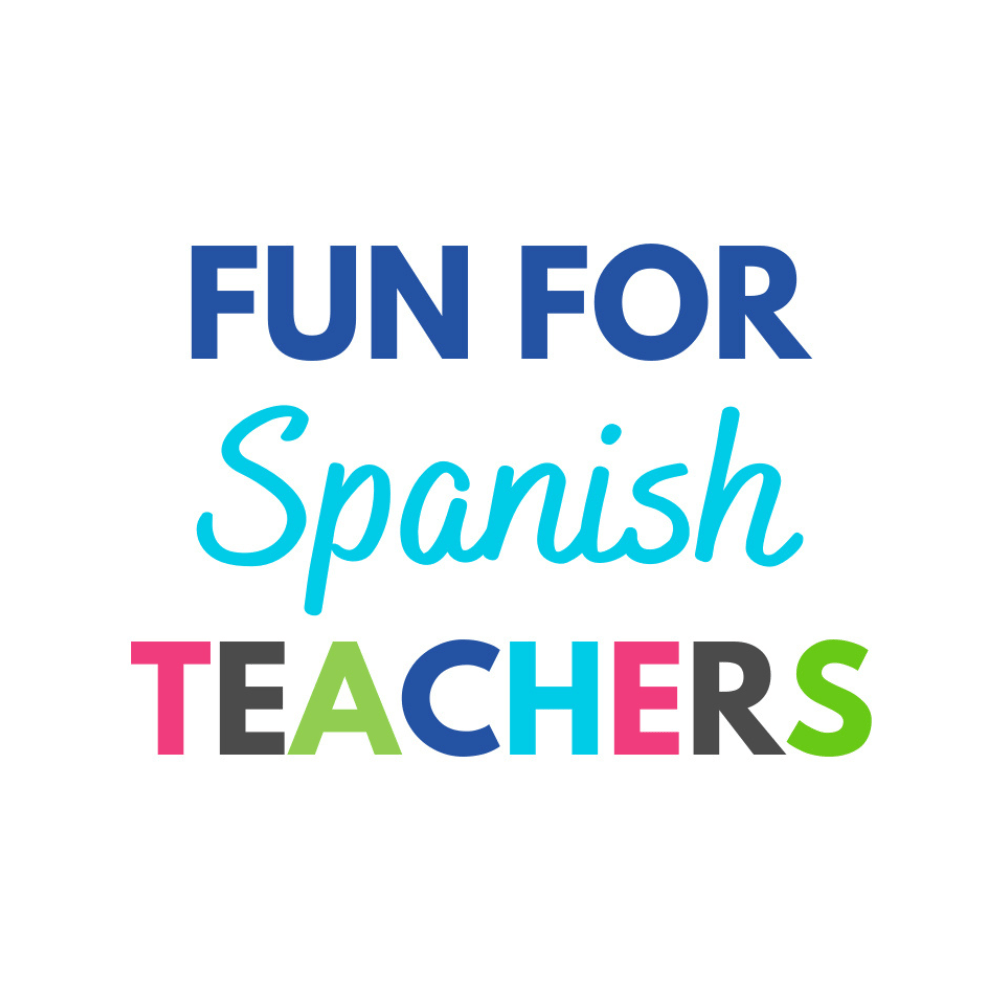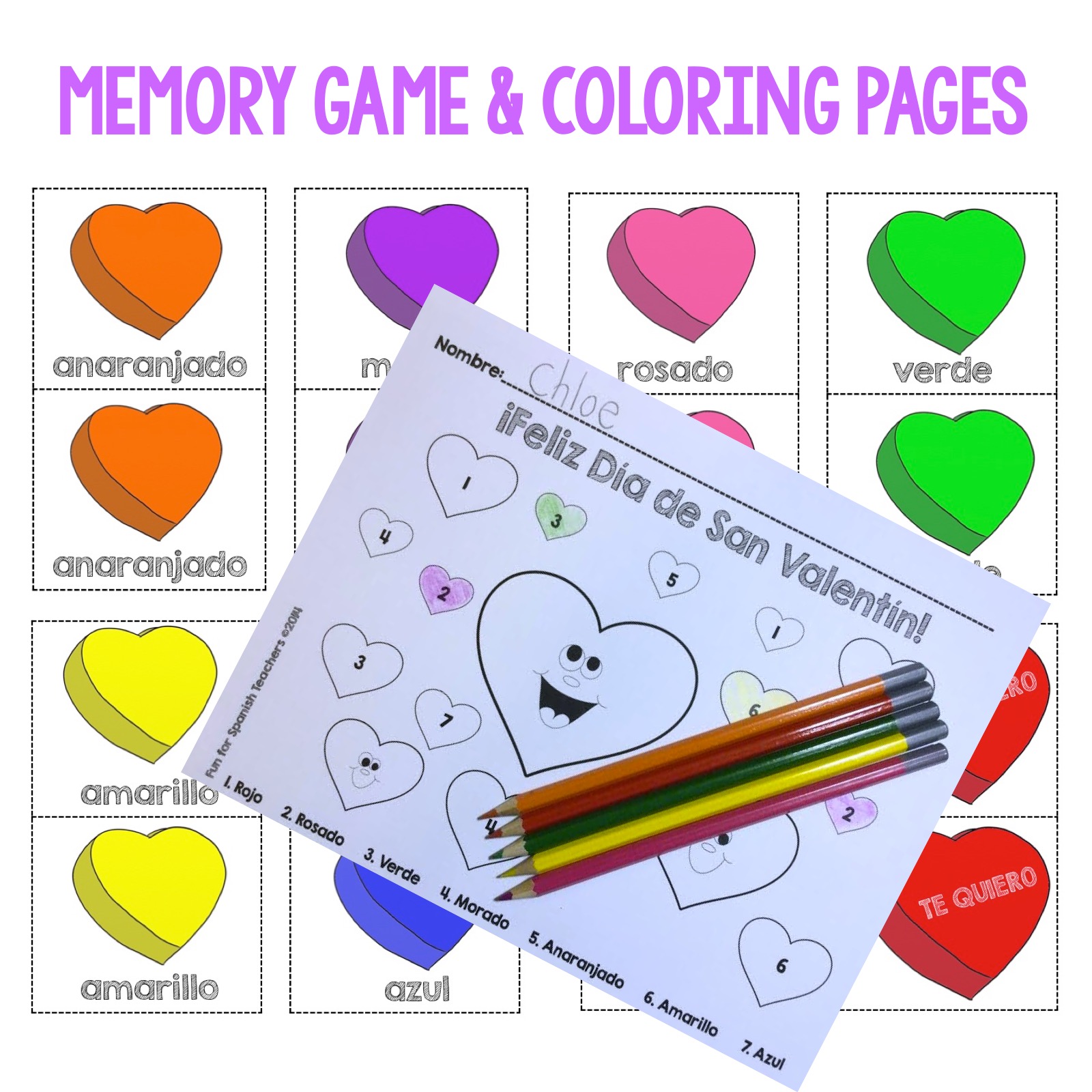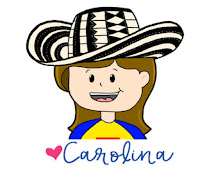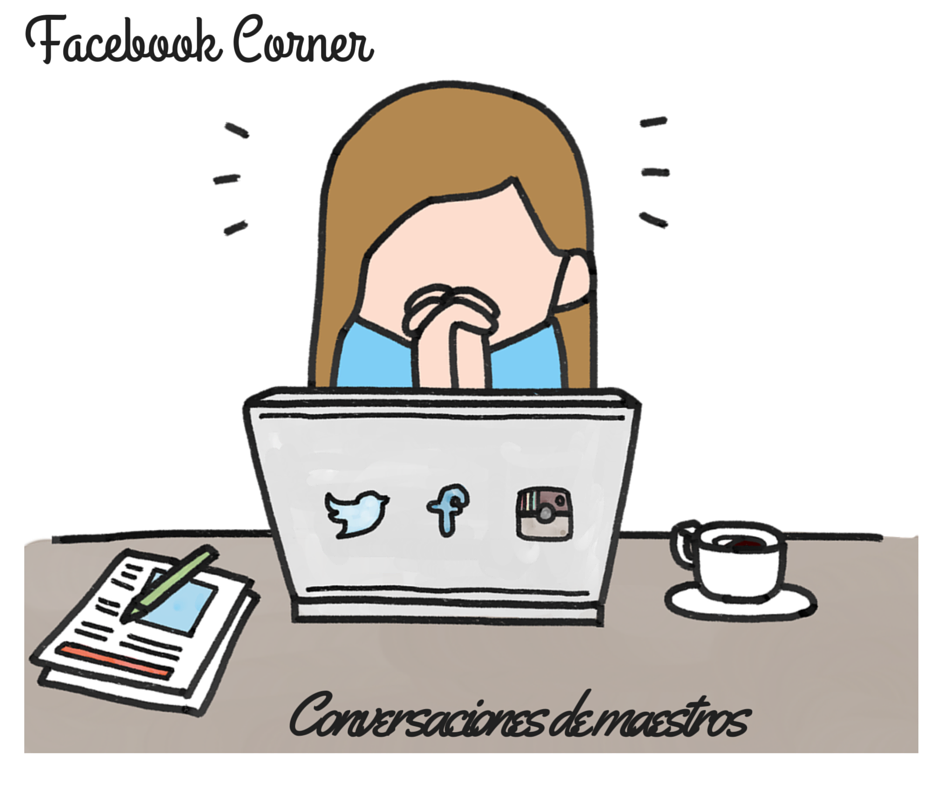I have teamed up with a group of ten World Language Spanish teachers who have teaching-related blogs and are active sellers on Teachers Pay Teachers. I am so excited about the diversity of this group – with elementary, middle and high school teachers. We have all prepared resources that will help you enhance your lessons to celebrate Valentine’s Day in Spanish class. Many of these resources will be free during the dates of the hop which are January 31 and February 1, 2015.
I am a K-3 elementary Spanish teacher. My students always enjoy mini-books in class, and I have put together one for you to use with your students.
Here is your freebie!
Hop over to Fun Monkey Bars to see the freebie she has prepared for you!
¡Feliz Día de San Valentín!
Carolina

Christmas in Colombia
December is a busy month in Colombia. Many schools close early in the month, and everyone gets ready to celebrate “la Navidad” with friends and family. Everything starts on December 7th with “La Noche de la Velitas,” a night for everyone to celebrate la Inmaculada Concepcion. You will find candles in many houses, and they will stay lit all, night and the celebration continues until December 8th.
From December 16 to the 24th, many families gather to recite prayers and sing Christmas songs next to the Nativity scence. This is called “Las Novenas” because it lasts nine days.
December 24th is a family night, when everyone awaits with joy the rebirth of “El Niño Jesús.” People share Colombian treats such as natilla, brevas, and manjar blanco to celebrate. The children that attended all the novenas without missing a might will get presents from the family hosting the celebration. This is the most important night when people stay up waiting for Niños Dios to arrive. Children have to go to bed before midnight to be able to receive their presents.
December 25th is the day when the children celebrate opening the presents “El Niño Jesús” left next to the Nativity scene, the Christmas tree, or under the bed.
All these celebrations lead to December 28th, “El Día de los Inocentes,” a day that is similar to April Fools in the United States. It is a day filled with jokes and fun.
And on December 31st everyone gets excited about the New Year and the resolutions it brings. Año Viejos are built in many places to leave the bad things from the previous year behind and make a new start. They are be burned at 12:00am. The five minutes before the year ends are crucial and frantic, with yellow underwear for good luck, suitcases filled to go around the block (to ensure you travel much), a dollar bill in your pocket (you probably get the reason for this one), 12 grapes with 12 wishes or resolutions, and many other exciting and fun thing for a new start to a new year.
January 6th is usually not a big day in Colombia, but it is in other countries like Spain. In Colombia, it’s the date that marks the end of the Christmas season which means it’s time to put away the pesebre for next year!
Hav fun!


Should Teachers Assign Target-Language Names? {Facebook Corner}
Conversaciones de maestros en nuestra página de Facebook
Fun for Spanish Teachers asked the following question based on an article published by Education World.
“Should Teachers Assign Target-Language Names?”
Joe: I teach approximately 300 students and try to make positive contact with every child and her/his family every year. I cannot imagine trying to remember every child’s given name AND target language name.
Erin: I agree with Joe. I teach a large number of students so I don’t give them Spanish names. I know they would live it though. unsure emoticon
Danyell : I have over 500 and I don’t give them target language names either.
Jeffrey: Same here. I teach 700 kids a week.
Sarah: Sometimes I will call a student using Spanish pronunciation or add “-ito” or “ita” like Briannita for a girl name Brianna, or Rosita for a girl named Rose. It makes it feel more like how a Spanish speaker would possibly address them and can be fun and endearing. I have a student named “Religion” and sometimes I say her name as it is in Spanish Religión… However, I am opposed to children choosing a new”name and especially do not want them to feel like they are “acting”… I want it to be authentic communication as their own identity and self.
Fun for Early and Elementary Spanish Teachers: Same here! I don’t give them names in Spanish. I have too many students and it doesn’t feel natural to me to call them by a different name.
Danyell: I have a Simon, Carolina, Brianna, and a few others that I use more of an accent with, too. I love this idea!
Simone: I have given Spanish names to my students who are new to the study of Spanish each fall. I use the Spanish version of their name or a name with many of the same letters, when necessary. Most of these children are first graders. They are normally thrilled with their new “Spanish names,” but occasionally I offer an alternative or two to a child who doesn’t like the sound of my first choice. I find it is useful in teaching them some of the basic pronunciation rules and correspondence to spelling in the beginning.
Brigette: I only teach 2 classes at the moment. We are in an area that is majority Hispanic, so Hispanic names are normal here and there is nothing to be learned from adopting one. I give my students a list of animals and plants. They choose from there or can choose any “kind” vocabulary word from the glossary of the text. They learn their classmates’ new names fast and therefore have 25 or so new words they know if Spanish. I did not do this when I had 250 students a day.
Mundo de Pepita: I give my kiddos Spanish names when they get to 2nd grade (I teach K-4)…they clamor for them like mad! BUT, I explain the difference between their real name and the one we use for Spanish class, which is like a ‘code name’, and that they would absolutely need to introduce themselves to a native speaker using their real name. I have to say that it continues the sound of Spanish throughout the class, and they so enjoy it. They are also useful when we start introducing the alphabet (3rd grade) and rudimentary reading skills… especially letters like ‘j’, ‘ll’, and ‘ñ’… they are able to make the connection between the Spanish sound and the letter because they have seen and used it with their name.
Caroline: Short I do give them Spanish names and they love it! They laugh at their new names and love hearing their names being called out in class.
CrianzaBicultural: I don’t think you need to change their names, but it is important to show them the equivalent of their names in the language they are learning. And the idea of using it and ita or even pronunciation in the target language is great for immersion purposes.
SeñoraSpeedy: I don’t give my students names either since I can barely remember their real names! I saw a great idea on the Nandu listserv through – a middle school teacher had students choose adjectives to go with their names. They learned descriptions and she had a way to help remember all their names.
Margaret: I did this one year with second grade, they were also studying Mexico in class. I spent hours on a Spanish baby name site trying to find names as close as possible to real names. We also made the name “necklace” tags, helped us all remember. The kids enjoyed it.
Janina: I teach PK to 8th. Only the 3rd graders get to pick their Spanish names from a list of 100 most common Spanish names. They make their own name tags. This way I can call them by their new name. They have a blast, especially because they are the only ones in school allowed to do so.
Whole Brain Teaching in the Spanish Classroom {Facebook Corner}
Seating Charts for Spanish Class {Facebook Corner}
Conversaciones de maestros en nuestra página de Facebook
Jodi says:
“Do you have any good ideas for seating plans? I have 22 classes and can hardly remember the students names!
Think it would work if I assigned a number to each student?”
Joe: How many students? Maybe they could wear name tags until you memorize most of their names.
Simone: I observed a teacher with a white board who had made a spread seat seating chart for each class. It was the first slide she displayed at the start of each class period, so children could check where to sit and she could check their names.
Lisa: I tried numbers but most kids would forget. It got crazy at the beginning if class sometimes. I just made a seating chart for each class and kept it the same all year. It worked well.
Melissa: I’m in a similar situation – I make seating charts which helps (including assigned spots to sit on the floor for the littlest guys) but I’m open to others’ suggestions!
Melissa S: I have 19 classes and totally get this issue. When I started, I made seating charts (my kids sit in rows, on a rug). Because I see them 2x a week, I photocopied the charts and then made a Monday group, a Tues. group, etc. I slid the papers into plastic protectors, back to back (2 per protector) and stapled them together in the groups. After a couple of months of using them, I had the names down and didn’t need to continue being so dependent on the chart. Later I would leave it on my table, next to smart board, for a quick glance, in the case I forgot a name.
Dana: I teach 46 classes a week, so I understand. As part of my warm up for the first few weeks, I throw a ball around and ask everyone their name. Then, once we’ve covered greetings, the kids throw the ball around and can ask their name or how they are. (As we cover more units, they have more choices of questions…what’s the weather, how old you are, etc.) I’ve been at the same schools several years, so it’s really just reminding myself of the returning students and learning the transfers and kindergartners. I let my students chose their seats until they show they can’t handle it, but if I were to move to a new school where I didn’t know the majority of the students, I would have seating charts for everyone.
Fun for Early and Elementary Spanish Teachers: I also make seating charts for my students. The homeroom teachers are helpful too. Every teacher gives me a chart of their classes with the pictures of each child in their group.
Debbie: I do that every year. I do it by number in alphabetical order.
Neen: Sometimes hrteachers assign numbers so you can use the same numbers too.
Ana:For me, it is easier to use sticks with numbers for every group. I have numbered lists for every class that I can quickly check when they do not remember. It is good for them to learn the numbers in Spanish, too!
Ana :For the older ones, I use seating charts. I have chair pockets, which have a space to put their name and group, as well as their cuaderno y carpeta.
Lori : Hi Jodi, I have 16 classes and I do use seating charts. I keep the charts all year, but mix the students up during activities for pair work, group work, etc. so that they aren’t always working with the same people. I feel it saves time as far as them sitting down quickly and especially for me to pass back work. I have taught in the same school for 15 years and I made an investment years ago in this product:
Virginia : assign seats for older kids. The younger kids are usually on he floor and I ask them to pick a classmate that is quiet and seated (& I specify girl/boy for listening comprehension) and the kids all know each others names.
Lori: https://pacon.com/product/educational-aids/classroom-seating-pocket-chart/ I reuse the labels every year and just update the classes as they move through the years. So after the first year I only had to add my new first graders and then reshuffle the names of the students in grades 2-8. I keep them in a 3 ring binder and they are there for a sub to reference as well.
Visit Fun for Spanish Teachers on Facebook for more exciting conversations like this one!









